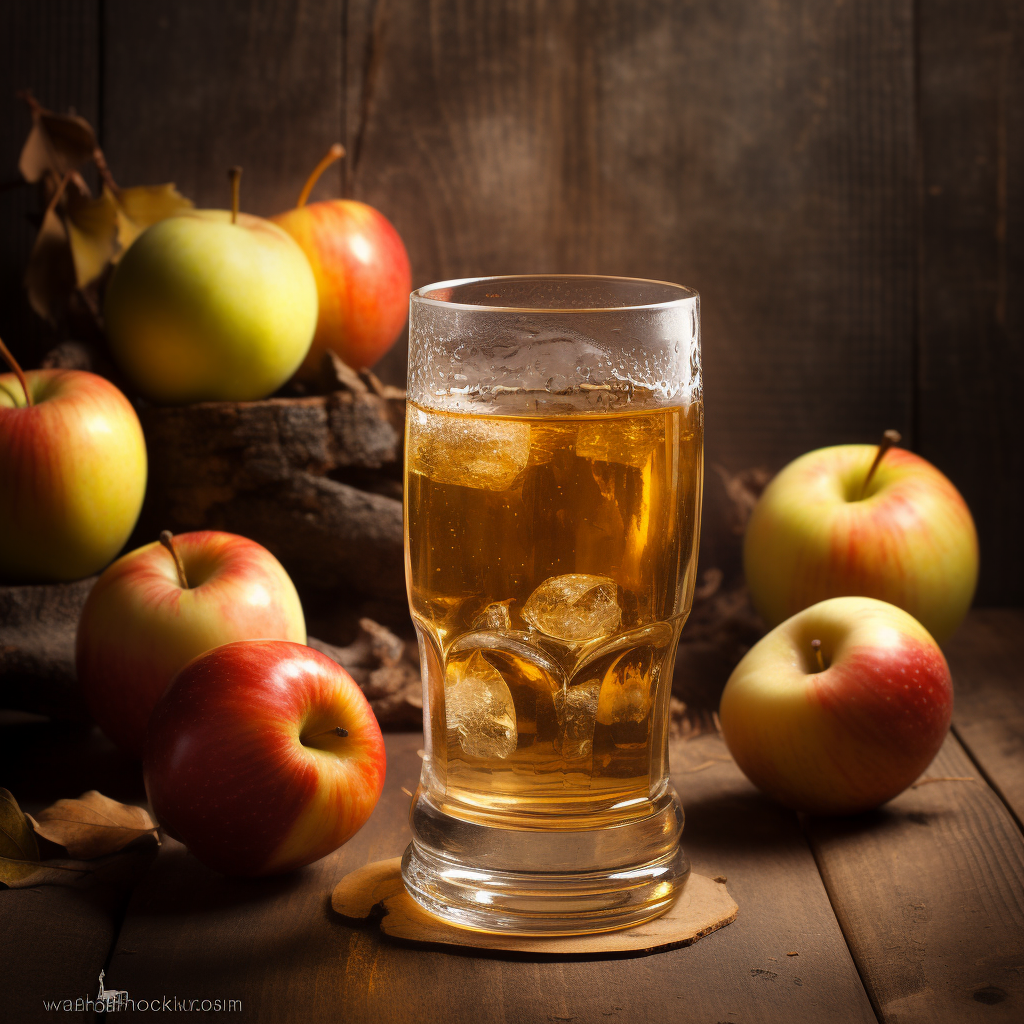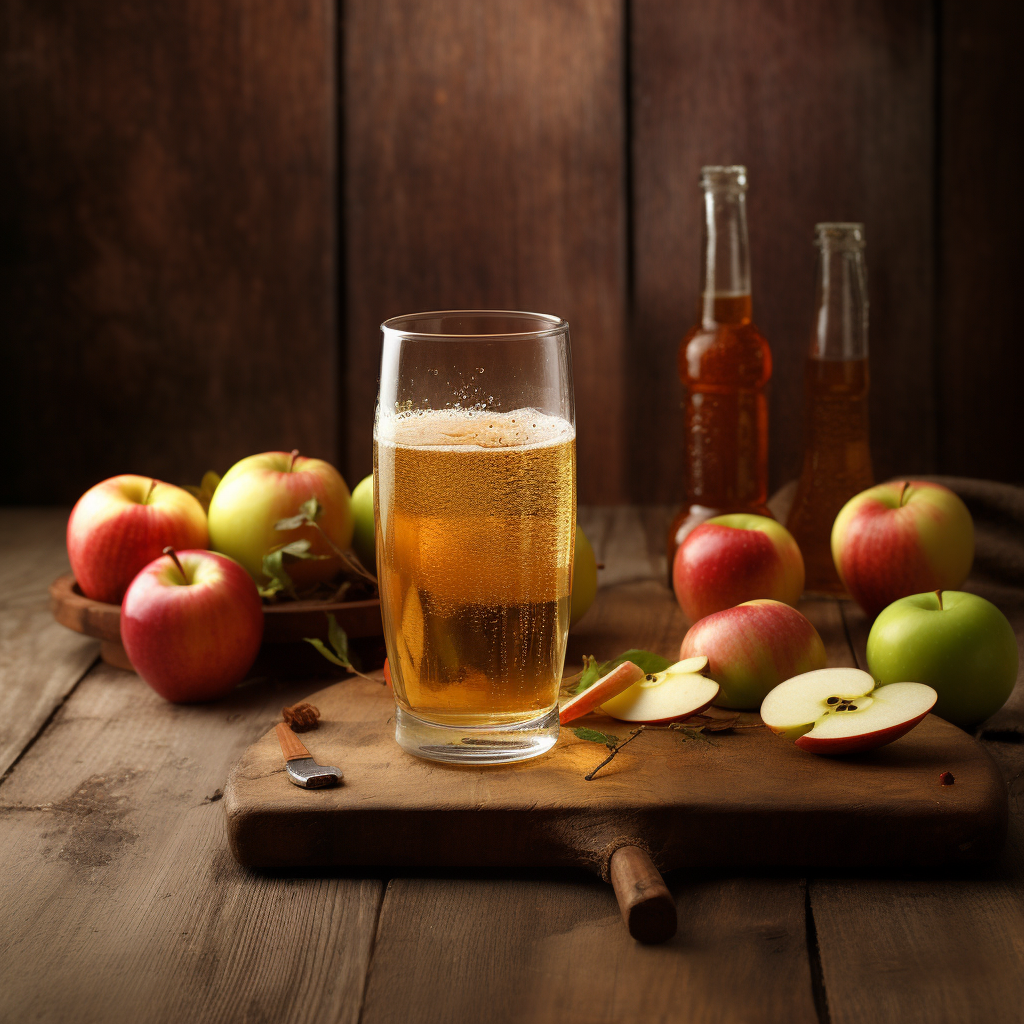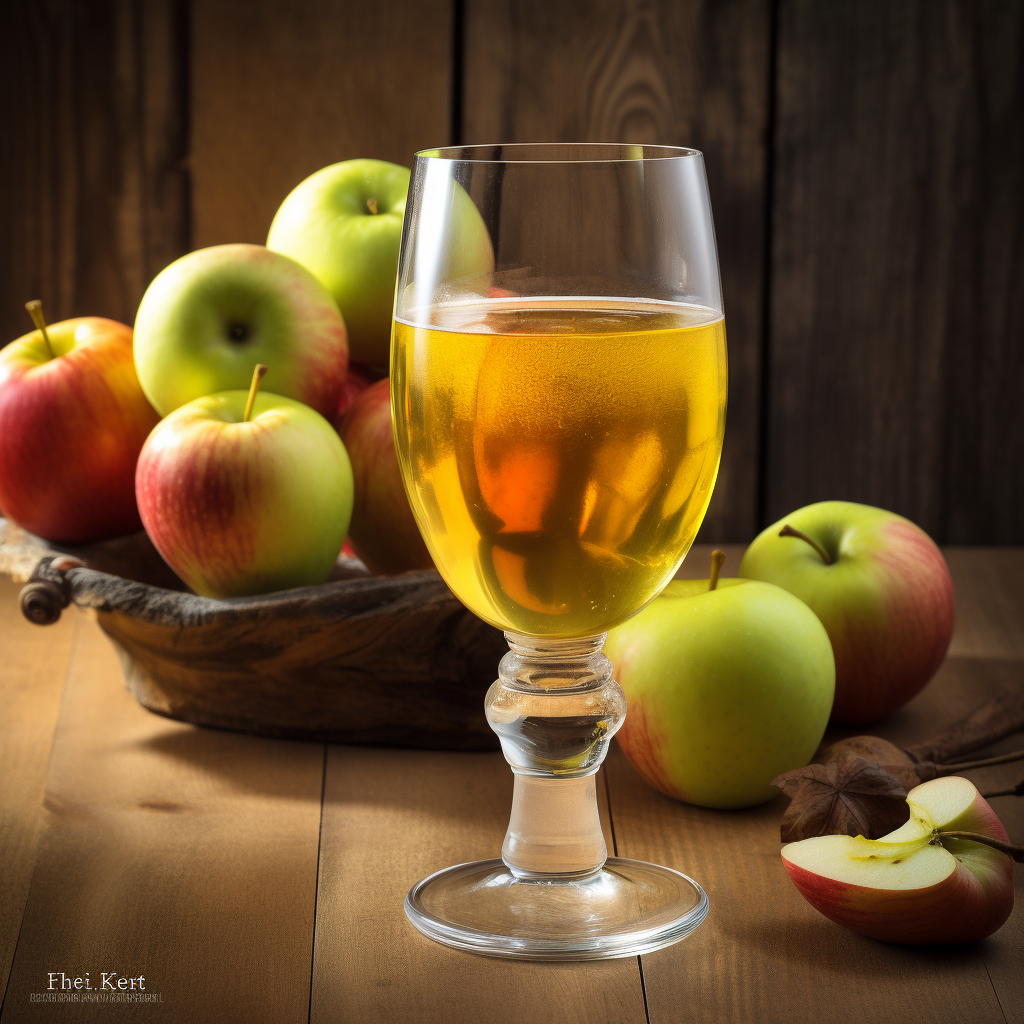As I sit with my glass of homemade Hard Cider, I remember the day when I first tried making it. It all began with a bunch of apples from a nearby farm and a lot of curiosity. I didn’t realize back then that this simple experiment would become a fun hobby that makes me happy.
I remember the cool day in autumn when my friends and I gathered to make cider for the first time we were heaving Spiced Pear Old Fashioned and Cortisol Cocktail. We had apples and were excited to learn something new. We laughed a lot as we washed, cut, and crushed the apples to make juice.
When we poured the apple juice into a big container to ferment, I felt excited. Every day, I checked on our cider, amazed at how it changed. The room smelled sweet as the apples turned into cider.Months later, when we tasted the cider, I felt proud. We raised our glasses and cheered to friendship, fun, and the tasty homemade cider.
In this article of Beyond the Bayou Blog, I want to share my journey of making homemade hard cider with you. From picking the best apples to learning how to ferment them, we’ll discover everything together. So, grab a glass, let’s start our cider adventure together. Cheers!
What is Hard Cider?
Hard cider is a kind of alcoholic drink made from fermented apple juice. It’s like apple juice that has been left to sit for a while and turned into a fizzy, slightly boozy beverage. It can have different flavors and strengths depending on how it’s made and the type of apples used. It’s enjoyed by many people, especially during the fall season.Hard cider has been enjoyed for centuries, with its origins tracing back to Europe and colonial America. It gained popularity in regions where apple orchards were abundant, offering a refreshing alternative to beer and wine.
Overview: How to make Hard Cider Recipe?

Making hard cider is a simple process that starts with selecting fresh apples. First, the apples are washed and crushed to extract the juice. This juice is then strained to remove any solids. Next, yeast is added to the apple juice to kick-start the fermentation process.
The mixture is left to ferment for several weeks in a cool, dark place. During fermentation, the yeast consumes the sugars in the apple juice, turning them into alcohol and carbon dioxide. Once fermentation is complete, the cider is usually strained again to remove any remaining sediment.
Finally, the cider can be bottled or kegged and stored for further aging or enjoyed fresh. The result is a delicious and refreshing beverage that captures the natural flavors of the apples.
Flavorful Drink Hard Cider
Equipment
- Apple Crusher or Press
- Fermentation Vessel
- Airlock or Blow-off Tube
- Yeast
- Bottles or Kegs
- Siphon or Racking Cane
- Thermometer
Ingredients
- 20 pound Fresh Apple
- 5 gram Brewing Yeast
Instructions
- Wash and Prepare the Apples:Thoroughly wash the apples to remove any dirt or debris.Core and chop the apples into small pieces. You can leave the skins on, as they contain natural yeast that can aid fermentation.
- Crush the Apples:Use an apple crusher or press to crush the apples and extract the juice. If you don't have a crusher, you can use a food processor or blender to break down the apples.
- Extract the Juice:Transfer the crushed apples to a clean cloth or mesh bag and squeeze to extract the juice. Alternatively, use a press to extract the juice from the crushed apples
- Transfer the Juice to a Fermentation Vessel:Pour the freshly squeezed apple juice into a sanitized fermentation vessel, leaving some space at the top for foam during fermentation.
- Add Yeast:Sprinkle the brewing yeast over the surface of the apple juice. If using dry yeast, there's no need to rehydrate it beforehand.
- Seal the Fermentation Vessel:Attach an airlock or blow-off tube to the fermentation vessel to allow gases to escape while preventing oxygen and contaminants from entering.
- Fermentation:Place the fermentation vessel in a cool, dark place with a consistent temperature (ideally around 60-70°F or 15-21°C). Fermentation will begin within a few days and typically lasts 2-6 weeks.
- Once fermentation is complete and the cider has cleared, it's ready to be bottled. Use sanitized bottles and caps or kegs for storage.
- Chill the cider before serving, and enjoy your homemade hard cider!
Notes
- Apple Selection: Experiment with different varieties of apples to achieve the flavor profile you desire. Consider blending sweet, tart, and acidic apples for a well-balanced cider.
- Yeast Choice: There are various strains of yeast available, each imparting different flavors to the cider. Research and experiment with different yeast strains to find the one that complements your desired taste.
- Sugar Adjustments: The addition of sugar can impact the sweetness and alcohol content of the cider. Be mindful of how much sugar you add, as it can affect the final flavor and mouthfeel.
- Fermentation Temperature: Maintain a consistent temperature throughout the fermentation process. Fluctuations in temperature can affect the activity of the yeast and the final taste of the cider.
Nutrition
Time for the Tips!
- Sanitize Everything: Make sure all your equipment is thoroughly cleaned and sanitized before you start. This helps prevent contamination and ensures a successful fermentation process.
- Consider Temperature: Fermentation temperature can impact the flavor and aroma of your cider. Aim for a consistent temperature between 60-70°F (15-21°C) for optimal yeast activity.
- Clarify Your Cider: If clarity is important to you, consider using fining agents or filtration methods to clarify your cider before bottling. This can help remove any sediment and improve the appearance of the final product.
- Be Patient: Good cider takes time to develop. Allow your cider to ferment and age properly to achieve the best flavor. Resist the temptation to rush the process, as patience pays off in the end.
What to Serve with Hard Cider?

What to do with Leftover?
- Cooking and Baking: Use leftover hard cider as a flavorful ingredient in cooking and baking recipes. You can use it to braise meats, add depth to sauces and marinades, or incorporate it into desserts like apple cider donuts, cider-poached pears, or cider-infused cakes.
- Cocktails: Get creative and use leftover hard cider as a base for refreshing cocktails. Mix it with other spirits like whiskey, rum, or gin, along with fresh fruits, herbs, and spices to create delicious concoctions such as cider sangria, cider mimosas, or cider-based cocktails.
- Marinades and Sauces: Use leftover hard cider as a marinade for meats or as a flavorful base for sauces and glazes. It adds a unique sweetness and depth of flavor to dishes like grilled chicken, pork chops, or roasted vegetables.
- Vinaigrettes: Make a homemade vinaigrette by combining leftover hard cider with olive oil, vinegar, mustard, and herbs. Use it to dress salads or drizzle over roasted vegetables for a flavorful and tangy finishing touch.
- Freezing: If you have a large amount of leftover hard cider, consider freezing it in ice cube trays or freezer-safe containers. You can then use the frozen cider cubes to chill drinks without diluting them, or add them to sauces and stews for extra flavor.
- Sharing and Gifting: Share your leftover hard cider with friends and family members who appreciate homemade treats. It makes a thoughtful and unique gift, especially when paired with homemade baked goods or preserved foods.
- Cooking Down: If you have a significant amount of leftover hard cider and you’re not sure what to do with it, consider cooking it down into a concentrated syrup. This syrup can be used as a sweetener in various recipes, such as drizzling over pancakes or waffles, mixing into cocktails, or stirring into yogurt or oatmeal.
Frequently Asked Questions (FAQs)
Q: How do I know when my cider is ready to bottle?
A: Your cider is typically ready to bottle when fermentation activity has ceased, and the cider has cleared. You can use a hydrometer to measure the specific gravity of the cider, or simply wait until it no longer bubbles and appears clear. It’s important to taste your cider to ensure it has reached the desired flavor profile before bottling.
Q: Can I carbonate my cider?
A: Yes, you can carbonate your cider either naturally through bottle conditioning or by force carbonating it using a kegging system. Bottle conditioning involves adding a small amount of sugar to each bottle before sealing to create carbonation during secondary fermentation.
Q: Can I add other fruits or flavors to my cider?
A: Yes, you can experiment with adding other fruits, spices, or flavorings to your cider to create unique flavor profiles. Common additions include berries, citrus fruits, cinnamon, ginger, and vanilla. Be sure to taste your cider as you go to achieve the desired balance of flavors

